Meghan's Blog
Travel adventures
World perspectives
Growing thoughts
World perspectives
Growing thoughts
|
The Amarillo Ice Ranch opens just in time for the hot summer weather The Amarillo Ice Ranch opened to the public in May 2021 after years of planning. AMARILLO, Texas -- “It starts with a dream,” Austin Sutter, Executive Director of Amarillo Hockey Association Inc., said. “It all starts with a desire strong enough to obtain something that you really want.” For Sutter, that dream was the creation of a new ice rink, which is now called the Amarillo Ice Ranch. Before the Ice Ranch, people went to the Amarillo Civic Center Complex to skate. It hosts a variety of events, such as concerts, rodeos, indoor arena football, trade shows, figure skating, hockey and more. As a result of the high demand for the space and the cost of upkeep, the ice does not stay year-round. Sutter said the process of starting a new rink took almost seven years of planning, searching, committing and then creating the space. It opened at the end of May and will be open year-round. The Ice Ranch was built in the Bob Goree Auction House in downtown Amarillo. The Civic Center, just one street over, will continue to host events and have ice for about seven months of the year. “I think having the two sheets of ice is going to enable us to continue our growth,” Sutter said. “It’s also going to provide people with what they’ve been missing over the last year and a half going through a world pandemic.” Through a private loan, the rink cost around $1.3 million to start, and it was important to the owners to provide a space for ice sports to grow in the Amarillo area. Austin Sutter coaches a youth hockey summer camp. Nick Burney, the assistant rink manager, helped prepare the rink to open over the last year. Now he drives the Zamboni, takes care of any small building maintenance and rents out skates for people who do not have their own. Burney grew up playing hockey, starting at age four. When he was 12, he played on a team at the Civic Center, but the program went away after only a few months. When Burney graduated high school, he went into the Air Force. “At a bunch of the bases I was at, they had hockey,” Burney said. “So we had base hockey teams, and we would play downtown in the adult hockey leagues. I did that on and off for 20 years, and then I moved back to Amarillo when I retired.” Burney got into the adult hockey program in Amarillo and plays the goalie position. Burney said he loves being at the rink, so he was excited to learn about the Ice Ranch and become involved. Nickey Burney goes over the ice with the Zamboni to make it smooth for the next skaters. “The biggest key,” said Sutter, “was to find partnerships in the community- whether that was with local businesses, cities, corporations- to put together a plan, and then to execute the plan.” The Ice Ranch partnered with the city to put in a sheet of ice, and Sutter says it will be there for a long time to come. With the Amarillo Bulls Hockey Association leaving Amarillo and moving their franchise to North Iowa, he saw an opportunity to purchase a new hockey franchise. The team, known as the Amarillo Wranglers, will begin playing this upcoming season. “The North American League and the owners in this division really thought that we were the group to keep hockey here,” Sutter said. In addition to the NAHL team, the Ice Ranch is home to recreational and competitive hockey leagues for all ages, figure skating, broomball leagues and they are even going to introduce curling. “Anything that you could do on the ice, we want to provide,” Sutter said. There are four A League teams and 11 B League teams for adults, and they play 25 games and then have a playoff system. Burney plays on a B League team. “Our guys couldn't practice in the summer,” Burney said, “So they would have to just do things in their garage.” They could practice stick handling, and puck maneuvers, but they only had access to the ice for about seven months of the year. “Now that we (have) this ice all year round, we're (going to) have a summer season,” Burney said. Joshua Deichert, 18, plays for the Adult B League team called the Golden Knights. He started playing hockey three years ago at the Civic Center. Joshua Deichert spends time on the new ice during a public skate.
Deichert grew up in Stafford, Virginia, playing street and roller hockey. But it was not until Amarillo that he started playing on the ice. “I just wanted to get into something new… something that I enjoyed,” Deichert said. He believes skating takes perseverance and determination and that it is important to get up when you fall, no matter how many bumps or bruises you get. “The Ice Ranch will provide an experience you’ll never forget,” Diechert said. Sutter said he hopes they will be building a new rink in five to 10 years, whether that is on the other side of Amarillo or in the surrounding towns, like Lubbock. “I think that’s very attainable,” Sutter said. “I’d like to see this expand. The passion for ice sports for me doesn’t just stop in Amarillo.”
0 Comments
By: Meghan Holland Both with full-time jobs, two kids and two dogs, Cory and Nikki Johnsen, co-owners of BLITZ Energy, are always busy. They said they consumed energy drinks regularly, and Cory would drink two or three in a day.
“We saw a problem,” Cory said, “The goal is that if you see a problem, how can you solve it?” Cory said the problem they saw was that most energy drinks are not nutritious, have added dyes, are full of sugar and caffeine and are overall not healthy products. Constantly on the go with work and their kids, Cory and Nikki decided to ditch the energy drinks they consumed regularly and create their own starting in May of 2020. “We wanted a clean, healthy, longer-lasting energy drink, and that’s what BLITZ is,” Cory said. With neither of them being trained as nutritionists or dietitians, they said they relied heavily on the people they hired to help create the formula. “It was a lot of going back and forth of figuring out what we actually wanted in the product,” Nikki said. Testing the flavors and figuring out what they liked was a tedious process she said. “The production (time) for the actual product to come is up to 12 weeks,” Nikki said. Cory said they wanted a few specific ingredients to be in the drink. This includes 200 milligrams of caffeine and rhodiola, which is an herb that can improve exercise performance and prolong energy levels. He said they also wanted to incorporate all nine essential amino acids and vitamins B3, B6 and B12. He said he wanted the drink to be low in calories and not have added sugar or dyes. “Obviously in a perfect world, if you can get your energy from natural whole foods, that’s going to be a better option for you,” Cory said, “But not everyone has the time for that, so we wanted to put something out that’s just the healthy version of an energy drink, and that’s what BLITZ is.” It was important to them that consumers did not feel a crash after drinking BLITZ. Nikki said they have received a lot of feedback from people who have tried their product. “They feel great after they take it, (and) they don't get the jitters,” Nikki said. “Some energy drinks will give you an itchy feeling, and ours does not do that.” She said hearing about people who like their product encourages them to do more and do better for the company. As of April 2021, BLITZ Energy offers one flavor of their energy drink mix-- Tropical Punch. Cory and Nikki said they have ordered the next flavor and are expecting it to arrive in the next few weeks. They will announce the new flavor once everything is finalized. Nikki runs the BLITZ Energy website and social media accounts, which include Instagram and Facebook. She said she tries to reply quickly to messages, especially because younger generations “like to have almost immediate responses back to them.” This is very time-consuming, and Cory and Nikki work on their business when they are not working on things for their full-time careers. Nikki said one of the biggest challenges of running this small business is “time management and making sure nothing falls through the cracks.” Cory and Nikki said they have explored the idea of adding more products to BLITZ Energy, but for now, they want to focus on the quality of their product. “I think that if we want to flourish and do really well, we have to figure out how to be really good at one product,” Nikki said, “And then get the trust of all of our customers, build our brand and then from there we might produce something else.” Nikki said she wants customers to know they are supporting a family and small business by buying a product that they really enjoy. BLITZ Energy also supports other local businesses by collaborating with them to sell BLITZ products at various fitness and yoga studio locations. “The networking has been awesome,” Cory said. “There are people who love it, and they want to tell their friends about it. They're telling them just because they love it, not because they're getting paid or they're getting any benefit from it, other than the benefits that an energy drink will give you.” By: Meghan Holland
The Street Department manages the highways and streets for all of Sioux Falls, which covers 80 square miles. As a way to track and compile data related to that management, the city created dashboards that are easy to view and can help with decision-making processes. The city defines public innovation as the process of generating and implementing ideas that create value for the community. The innovation of using these dashboards results in greater efficiency and productivity through asset management. The city maintains two dashboards, one for warmer temperatures (summer) and one for colder temperatures (winter), to track data related to construction, street preparations, safety precautions and even a crew’s location and work status. The summer dashboard covers street maintenance such as pothole patching, asphalt overlay and any type of surface maintenance. The winter dashboard covers things related to snow and ice control, such as salt usage and the amount of snowfall the city receives. Kristin Lobien, Street Logistics Specialist, said that each dashboard has tabs within them tracking more specific data. With the new asset management software, she said data tracking is much simpler. “Before, I would have to go into a table and put that data in,” Lobien said. “Now, we have it tied on the backside, so when the employees put how many tons (of asphalt) they put out on a roller, it automatically updates our dashboards.” Lobien said the data is being recorded 24 hours a day with information coming in from crews working around the clock. An example of how the dashboard works is the pothole operation, which is its own tab within the summer dashboard. “We can see how many potholes are generated each day from our requests to how many potholes are closed per day by the crews,” Dustin Hansen, Street Operation Manager, said. “We can even go back and look at where each pothole request is located within the city, and we can go back multiple years.” Hansen said he is heavily involved in day-to-day operations, and when he thought of this idea, it was Lobien and Austin Brynjulson, Civic Analytics Specialist, who really brought it into fruition over the last two years. Brynjulson said the dashboard itself is accessed via a URL, so it is stored in the Civic Analytics Department, formerly known as the Geographic Information Systems (GIS) Division, and when someone needs access to it, they must have an account to receive the URL. He said the process of collecting data through different sources, such as pulling weather from the National Weather Service, updates from crews, requests from citizens, etc. has been innovative for the city. Hansen said the dashboards are primarily for internal use by all employees of the Street Department as well as some city employees outside of the department. “It’s a good tool for not only management, but for others to really dive into the data and see where our problem areas are at (and where we need) to focus our resources,” Hansen said. He said the city prides itself on being efficient and providing good customer service, so this is another tool they can use for that. “It’s always going to be evolving,” Hansen said. “It’s always going to keep growing.” By: Meghan Holland
With the world shutting down due to COVID-19 restrictions, Siouxland Libraries started opening up to new possibilities. In March of 2020, Siouxland Libraries shut down for the pandemic, and as they realized that it would be more than just a two-week shutdown, they started brainstorming ideas on how to connect with people and continue providing services. “We had never done virtual programming,” Jodi Fick, Director of Siouxland Libraries said, but despite having no prior experience, they decided to try it out. The programs they provide are for all age groups and cover various interests. One of the more prominent programs they present virtually is reading books for storytime. The city defines public innovation as the process of generating and implementing ideas that create value for the community. The innovation of implementing virtual programs allows for continued customer experience from the isolation of one’s home. Siouxland Libraries communicated about their virtual programs through their online newsletter that is emailed out, as well as through their social media, including Facebook, Twitter and Instagram. Fick said they went through a period of adjustment when learning about the technology and trying to reach more people. She said they even had to experiment with the best setup for Facebook lives and Youtube videos. “It was quite an amateur operation,” Fick said. Around the same time Siouxland Libraries started these virtual programs, most of the staff also started working from home. Fick said the staff had to figure out how to present virtual programs from their own homes by adjusting lighting, experimenting with camera angles and testing out how to present a book to their virtual audience. “I am incredibly proud of the Siouxland Libraries staff,” Fick said. She said they showed dedication, creativity and commitment. Siouxland Libraries is now open to the public again, but the staff continue to produce virtual programs. Fick said this will continue on in the future, even after the pandemic, to allow more opportunities for people to get involved with programs if they cannot attend a certain event live or if someone from out of state wants to tune in. Now that they offer more in-person events, Fick said they have decreased the number of virtual programs and increased the quality of those virtual programs. “We truly are servants, and in the midst of something that none of us could have imagined living through, (the Siouxland Libraries staff) were able to still make human connection,” Fick said. “Virtual programming allowed us to do that.” By: Meghan Holland
City employees have purchasing cards (p-cards), which allow them to have more responsibility in business purchases. They must then report any expenses to the Finance Department. The Finance Department handles purchasing, budgeting, operations, investments, cash management and all of the accounting and financial reports for the city. Dawn Taborda, Business Application Specialist for the department, said before the updated purchasing process, when a city employee needed to make a purchase, it was recorded manually. After they purchased an item, they would have to keep the receipt to put in a p-card packet with information on what they purchased, where they purchased it and the amount they spent. They would then send it to the Finance Department for an audit review, and the information would be entered into the system, Taborda said. “It was a very paper-intensive process,” Janelle Zerr, Finance Manager, said. She said there were over 30,000 transactions in a year, and with the amount of paper being used and the time it took to complete the reporting process, it prompted a change in 2019 that was more user friendly and streamlined. “Anything over $1,000 is run by the Purchasing Department right now,” Zerr said, “And so the purchasing cards in general were meant for those smaller purchases, so their departments had a little bit more flexibility and convenience in purchasing smaller items that they would need to do their daily business.” Jon Economo, Business Application Specialist in Finance, said they tried to take a more human-centered design approach to making changes by going out and speaking with the employees that use the p-card system the most and asking them what would make the process better. “A resounding response to that was less paper,” Economo said. “A lot of these guys are working out of their trucks, and sometimes it’s hard to keep track of that stuff. If they had a system where they could just take a picture of the receipt on their phone, that would really help them keep track of all their expenses.” Now, employees can send in their receipts from anywhere using an expense reporting system called Concur Expense. “We elected a few different options as far as software, but nothing could match the robustness of Concur,” Zerr said. “We knew with the volume that we had to deal with that we wanted a system that could handle that and do so smoothly.” Zerr said the greatest benefits of this change are using less paper and being more efficient. They ran a pilot group in October 2020 with people from three different departments to identify any issues in the system, which Zerr said helped tremendously. “It’s a learning curve with technology,” Zerr said. She said overall the users have wanted to learn the system and have come to like it. Their next goal is to get people on the mobile application of Concur. “Now that we’ve taken this leap into the use of technology, it’s constantly evolving,” Economo said. “We’re constantly learning new things (and) tweaking little things here and there.” With continuous innovation and technological improvements, the city strives to implement ideas that create value and great service to its citizens. By: Meghan Holland
Working out of their company trucks, city inspectors have learned to adapt to the job on the go. The City of Sioux Falls made the decision in March 2020 for the Inspections (Building Services) Department to transition their inspectors to working from their company trucks in light of the COVID-19 pandemic. Chief Building Official Butch Warrington said the decision “did what we were hoping it would do” because the city has not had more than one inspector out for COVID-19 at a time. This allows the city to maintain inspections in all trades. The goal of this transition was to comply with COVID-19 guidelines and limit community contact by reducing the number of people that come into the office, but it also resulted in greater efficiency in day to day operations. The city defines public innovation as the process of generating and implementing ideas that create value for the community. The innovation of having inspectors work from their trucks allows them to continue their work while improving COVID-19 safety measures as well as boosting efficiency. The inspections department is considered critical infrastructure, and Warrington said it is important to continue working on inspections in order to keep the economy going. “Without inspections,” Warrington said, “it would stop all construction within the city limits. Therefore, to keep people working and to provide growth in the economy, one needs to do inspections.” Four inspections divisions operate within the department, including building, electrical, mechanical and plumbing. Each inspector has access to a company truck, and if the inspector lives within the city, they can take their trucks home. Otherwise, the inspector will come to the office to get their truck and head to their first job. “One inspector put on about 2,000 less miles last year than the year before,” Warrington said, “so that tells me that we’re saving not only in gasoline and wear and tear on a vehicle, but we’re being more efficient.” Previously, inspectors would come into the office in the mornings for about an hour to answer phone calls and discuss different jobs with their coworkers before heading out for an inspection. Now, the city can complete more inspections per day by having their inspectors go straight to the job site and start working. This saves the inspector about 65 hours of driving time. “This also allows for time to answer contractors’ questions on the job site,” Warrington said, “so it gives the chance to educate and build a better relationship with the people in the field.” Neil King, the building inspection manager, said their biggest concern about working from trucks was that they would lose the team aspect of the job. He worried that inspectors would “lose that relationship and that ability to lean on each other for questioning and growing their own knowledge.” However, King said the inspectors have still been calling each other and reaching out when they have questions. “Efficiency is the biggest advantage,” King said. Inspectors have more freedom in planning their own day. He said they can now schedule lunch breaks or time off for things like dentist appointments whenever they need to and still get all of their work done because there is not an expectation to come into the office at a certain time. Each inspector covers a specific area of the city. “They usually get to the job site a lot earlier than they did if they have to come into the office,” Gary Klarenbeek, the mechanical inspection manager, said. “Most of my guys live either in or really close to the area of the city that they do inspections in.” Klarenbeek said the inspectors already worked on iPads and had the ability to remotely access their desktop in the office, so the team was fairly mobile to begin with. “I’m lucky with my group because they’re all pretty adaptable,” Klarenbeek said. He said the IT department has provided some extra support to make sure everything keeps running smoothly, and the inspectors have adapted to the technology quickly. The city also implemented virtual inspections. Klarenbeek said while not all inspections can be done virtually, there are times when the inspector can FaceTime a contractor on site and have them walk through the areas they need to inspect. “Virtual inspections are definitely here to stay,” he said. “That is much more efficient for both us and the contractors.” The inspections department will maintain some of the new practices even after the COVID-19 pandemic according to Warrington, King and Klarenbeek. Warrington said inspectors will continue working from their trucks. “Had this happened 20-30 years ago with the technology that was available then, we wouldn’t have been able to do this,” Klarenbeek said. “The technology has made a huge difference in our ability to work from home and work from the truck.” By: Maya Fawaz, Meghan Holland, Lucy Lopez, Evan L’Roy Papers and pencils are replaced by keyboards and screens as Texas fine arts classes struggle to foster learning during a global pandemic. “Everyone in the entire world is on the Internet right now,” said Laura Edens, an art teacher and director of fine arts classes at Harmony School of Excellence in Houston. The COVID-19 pandemic has forced teachers, students and families to modify their teaching and learning practices. Fine arts departments have faced challenges adjusting to online learning for the remainder of the academic year. Many teachers have said they are concerned about what this transition will mean for the future of education and whether students are getting a good foundation in art, music, physical education and theater. The lack of interactivity has forced some parents to facilitate learning at home by using the resources they already have or those provided by schools. “Some households don’t have Internet, some households don’t have laptops, some households have a phone but maybe not a data plan,” said Edens. “The world is trying to help education continue.” As of April 21, there were over 20,000 COVID-19 cases reported across Texas’ counties, according to Texas Health and Human Services. Gov. Greg Abbott announced in a press briefing on April 17 that all schools will remain closed through the end of the summer. Previously, Abbott said he hoped to open schools again by May 4. In response to the closure, many schools in Texas transitioned to online learning by using Google Classroom and similar online platforms. Adjusting to the new program was time consuming because educators only had a few weeks to set up their Google Classroom and get everyone on board, Edens said. “Parents and kids are trying to figure out how to sign on and understand the program,” Edens said. “It’s a learning curve on all bases.” According to several fine arts teachers, schools have implemented shorter lesson plans and are taking accessibility into account regarding their students’ access to the internet and education materials. To combat this, Austin ISD has announced that it is providing students grades 3 to 7 with Chromebooks and deployed 110 school buses equipped with WiFi capabilities to neighborhoods and apartment complexes. Edens said she knows students may not have certain materials, so she tries to work with what they have. She said she assigned a “found color wheel” to her elementary students, where students had to find objects around their house that could reflect the colors of the rainbow. She graded them based on whether they did the assignment and if the colors were in the correct order. HSE’s administration told teachers to focus on “giving them an experience” rather than focusing on grades. “There's a lot of teachers who have shared their lesson plans. We just beg, borrow and steal from one another and come up with ideas on how to teach kids,” said Jackie Selman, a fifth grade fine arts teacher at Greenways and Pinnacle Intermediate schools in Amarillo. Selman teaches a theater class and said she is worried about how well her students can learn a subject from home that relies predominantly on group interaction. She said her class does not take precedent over the core curriculum so as to not overwhelm the students with additional coursework. Selman said they stopped working on everything from improvisational and acting exercises to rehearsals and performing plays. However, Selman said students can turn to the fine arts classes for enrichment and fun. To foster creativity, Selman said she recorded a dance video with her 8-year-old daughter and asked her students to critique her. Selman said she previously used YouTube videos to demonstrate different voice and acting exercises in the classroom. Now that the course is online, she said her school does not want teachers to link YouTube videos in their lessons so students will not get distracted by other videos on the platform. Because of this, she said she is adjusting her lesson plans to include videos she makes herself, so students may still interact with the lessons. “I have short reader’s theater plays, so I'll read a play and I'll change the voices, you know, be all the voices in the play, and post that video,” Selman said. Selman said she understands why she is not allowed to choose the teaching platform, as in picking between Google Classroom, Seesaw or another online program, but that it can still be frustrating to not have that freedom. “I wish we mattered more,” Selman said. Edens said she recognizes the importance of the school’s emphasis on the core curriculum. However, she said she is concerned that her classes may not be taken as seriously as the other classes. “They’re putting us at the bottom of the totem pole, which is where we always are,” Edens said, “but now it’s even lower than the bottom of the totem pole.” Studies indicate that fine arts classes are beneficial to the student’s overall learning experience. “Not only do extracurricular activities instill great values, they have also been proven to boost school attendance, academic success, and aspirations for continuing education past high school,” according to the National Education Association. Edens said she worries that students and administrators will think of her class as a “brain break” and will not take her class seriously when school returns to normal in the fall. “They’re going to have this mentality of ‘oh, you’re not giving grades, I’m not doing it,’’’ she said. Despite her fears that many students will ignore these online classes, some students said they are willing to learn through the new programs. Sixth grader Hailey Garcia, who attends Hendrick Middle School in Plano, said she found the online experience frustrating, especially when it comes to submitting videos of orchestra practice. Hailey said practicing is not quite the same without teacher supervision. When her mother, Mary Garcia, tried to step in and help, she said she was not sure how to best support her children. “I don’t feel that I’m fully qualified,” Garcia said. Garcia said she worries that if this becomes permanent she will not be able to help her daughter with schoolwork. As a working parent, she said she finds it difficult to balance working from home and helping both of her children with their education. “What I could see happening,” said Garcia, “Is that my kids would lose quality of education, or I would have to teach myself and bring myself up to par to be their teacher.” Gwen Wilhite, another Plano ISD parent, said she provides home-training in fine arts as much as she can. “We’ve done so (many) chalk drawings, you would not believe,” Wilhite said. (authors note: this story was written for J310F at the University of Texas at Austin) By: Meghan Holland  Bear spends time hiking and camping with owner Spruell. Photo Credit: Courtesy of Lindsey Spruell. Bear spends time hiking and camping with owner Spruell. Photo Credit: Courtesy of Lindsey Spruell. Lindsey Spruell, a social work junior at West Texas A&M University, said having a pet helped her get out of a low point in her life. “I felt like I needed something to be there for me,” she said. “I was just really lonely and sad, and then I adopted Bear, and he helped.” Bear is a dog that she adopted from an animal shelter in Amarillo, Texas last year. Spruell said she had been thinking about adopting a dog for a while, and after she got out of class one day, she decided to just go and do it. Spruell said she remembers how the Facetime call went when she told her parents that she had adopted Bear. She said they were not very happy at first. “My dad was so dramatic. He was like, ‘You're never coming here ever again.’ And guess what? Now he loves this dog,” she said. Spruell said Bear has become her best friend. “No matter what happens with me and someone else,” she said, “I'll always have my dog around. And it's just really comforting.” For many people, pets bring a sense of comfort and joy that only an animal can give. According to the 2019-2020 Animal Pet Products Association National Pet Owners Survey, 67% of households in the United States own a pet, which translates to about 84.9 million homes. Spruell said she takes her dog everywhere with her. She said she lets him lean his head out of the window while she drives, and the two of them have a favorite song that they listen to. She said she even takes him hiking and camping. “I took him to go camping in Colorado on the sand dunes,” Spruell said. “That's probably the best memory because he was off the leash, and he was just having fun.” In addition to Bear, Spruell recently rescued a cat from a car repair shop. She named him Midnight, and she said the two animals are now best friends. “I rescued the cat from a car place,” Spruell said, “Which sounds weird, but they were working on my car, and they were hitting the cat with the tools. And he was a kitten, like really, really small, so I just took him.” Midnight, she said, is more of a troublemaker who has an attitude, but she said he also can be really sweet. Spruell said she does not understand her cat but loves him anyway. Steven Greene, the director of Animal Services at the Lubbock Animal Shelter & Adoption Center, said he thinks many people choose to adopt or rescue animals because the animals are in more need of help than those that are born in a mill or are breeded out. “Many of (the animals) come in from the streets, and they're unwanted or neglected,” Greene said. “You feel better helping that animal that may not have otherwise had a good option.” Greene said he grew up around animals but then was away from them for most of his adult life. He said he wanted to do something different after leading various careers such as working for the city, and he saw an opening. He applied as the field operations officer for the shelter. “Our adoption numbers have changed tremendously in the seven years I've been here,” he said. “When I started, we were more of a high kill, low adoption type of operation. And we have completely changed that around where we have had a 96% or higher save rate the last four or five straight months, and over 90% over the last 24 months.” The shelter has had to change their operations in accordance with city and state mandates due to COVID-19. Greene said Megan Schroll, the assistant director of Animal Services, is the “adoption expert” for the shelter. “We have been doing appointments every day for an hour,” Schroll said. “People can come to the shelter, and they wait outside, and we go and find their perfect dog for them. We ask them a few questions, and make sure it'd be a good fit for their family (and) for their lifestyle.” The shelter has also incorporated special events, such as what they call the “Doggy Drive-Thru.” “People can just drive up and find a dog, and that's been super successful. We've had 25 adoptions in three hours, and that was our highest one that we had, and we're having another one this week,” Schroll said. The shelter had about 180 pet adoptions in the month of April, which is lower than normal, but considering that no one can come in the building, Greene said it was amazing. Schroll said that shelter animals take about a month to acclimate to home life with the new routine and training. Schroll said she encourages people to be more adamant about giving their new shelter pet time and giving them a better chance of life. “People really need to see past getting a purebred dog or something close to that, because any dog makes a good dog through training and TLC,” she said. “It's just really important to keep your options open and make sure you know that they're well taken care of afterwards. A lot of the shelter dogs are not potty trained when they leave, but it really just is a matter of time.” Brett Beitlich, the growth and outreach liaison at St. Joseph Regional Medical Center in Lewiston, Idaho, said he recommends researching the animal before adopting it so the pet owner will know what to expect. Beitlich said it took some time to train his two dogs, Hanna and Maddox, because he rescued them off the streets in Guam while he was in the military. Maddox was just a puppy when he rescued her. “Guam had a bunch of stray animals, and the towns were overrun,” he said. Beitlich said that because they came from the streets, the dogs often got into the trash can when they were hungry. It was habitual for them to search the trash for food. He said they have since adjusted to the training, and he also said that a pet owner needs to be able to devote the time and commitment to helping their animals. “They rely on you,” Beitlich said. When Beitlich came back to the United States, he brought his two dogs with him. He said Hanna and Maddox “have traveled more than some people get to travel in their entire lives.” He said there is no way to measure what it means to be a pet owner. He can be having a bad day, but his dogs make it better. Spruell shares that feeling. “What’s not good about having animals?” she said. (authors note: this story was written for J310F at the University of Texas at Austin) Into the unknown...4/1/2020 Covid-19. It's all the world is talking about right now. Many cities are under shelter in place mandates, and entire countries are on lock down. I never would have imagined all the things that are happening in 2020, and yet here I am, living through all of this. History is being written as we speak.
If someone had told me that college campuses would shut down and I would be sent back home during my first year of college, I would have laughed. That seems unheard of. I left Austin on March 13, and I have yet to go back to get all of my stuff from my apartment. They initially extended spring break by one week, but while I was home they announced that classes would go online for the rest of the semester. Little did I know that March 11 would the last day that I went to class for awhile. I must say that my professors have been amazing throughout all of this. We are all going through different things caused by the same pandemic, and it is important to recognize that we must be considerate of that. My professors have been very helpful in this transition, and I applaud all that they have done to make this work for us. There are certain steps I have taken to keep myself sane. I try to keep a daily routine so that my life doesn't feel like it has been completely been flipped upside down. I still wake up around 7 a.m. and get dressed for the day. I make time for new hobbies, like sewing and painting. I try to make up my bed still, and I go to another room to "attend" my classes. It is easy to fall into a pattern of laziness and indifference, but that does not benefit me in the slightest and it gets depressing. I have discovered that exercise is my friend throughout all of this because it helps boost my energy and my motivation. I don't go out at all. Not even to the grocery store. I don't want to put myself or anyone else at risk, especially not my family. I understand that people feel cooped up, but the best thing we can do right now is stay home unless it is for an "essential reason," such as working or getting food. Even with all of the horrible things that are happening, there are still good things going on in the world. I am impressed by many communities that have come together to help and support one another. Museums are offering virtual tours, discovery centers and art centers are teaching online classes and many news companies have removed their online paywall so that all people can have free access to information about Covid-19. The earth is healing in many ways too. Pollution has significantly decreased, natural bodies of water are becoming clearer, wildlife is coming back to certain areas that have been unoccupied for years and the environment is overall getting healthier. Despite the world being thrown "into the great unknown," there is still hope for us. We can and we will get through this. Remember to take care of yourself, and try to help someone each day, even if it's just making them smile or telling them that you're thinking of them. Reflecting on November12/1/2019 With two weeks left of my first college semester, I realize how fast time has gone by. I have already experienced so much this semester, and I am grateful for my time at this wonderful university. I was hired by the on-campus student newspaper, and my knowledge of journalism and human interaction continues to expand with each day.
I find myself less nervous to approach people, and my overall confidence has grown tremendously. Being so far from home has allowed me to create myself apart from family and develop a better understanding of my self identity. However, I am excited to go home for the break and spend quality time with friends and family. November was a very busy month for me. I spent my time studying for classes, going to various sporting events, building relationships, developing good habits and planning for the future. I also had to learn about confrontation and standing up for myself, even when it is the difficult thing to do. College offers valuable and practical life lessons through experience, and I am thankful for all the lessons I have been learning. At times, the amount of activities I became involved in seemed overwhelming, but despite that, I would not change a thing about the month. Some of my favorite moments of November include attending a live taping of "The Tonight Show Starring Jimmy Fallon," meeting new and interesting people through newspaper interviews, exploring my new city and visiting the ice rink to figure skate for the first time in seven months. This has been a semester of growth, and I look forward to the semester to come. I am taking every opportunity I can to learn something new. -Meghan Holland AuthorI am an aspiring photographer, writer, and adventurer. I love the outdoors and I love to tell a great story with pictures! Archives
July 2021
Categories
All
|
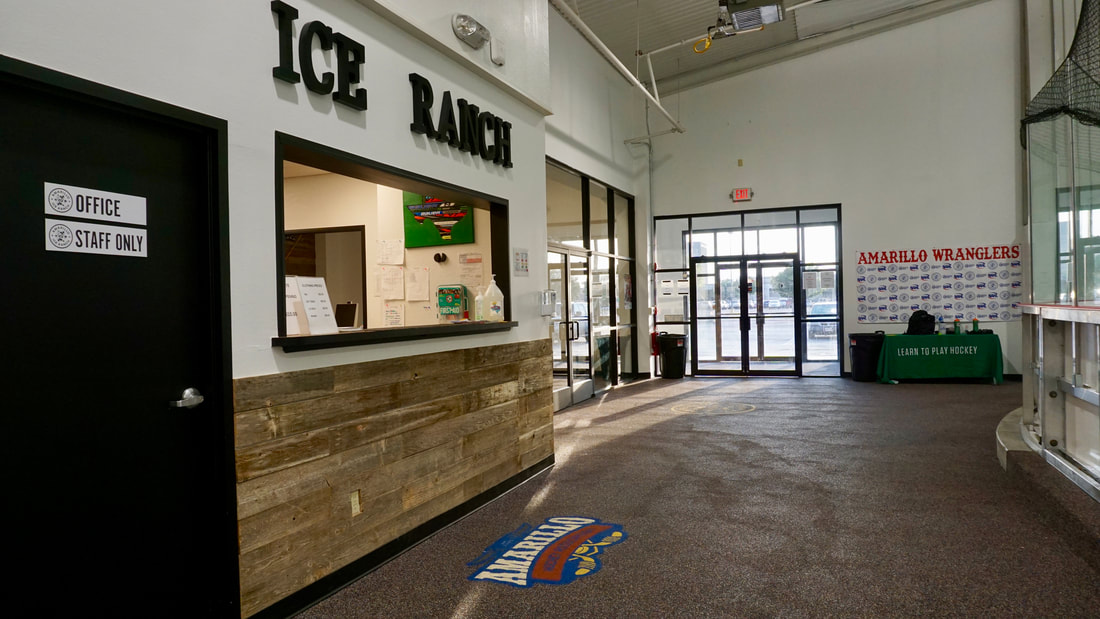
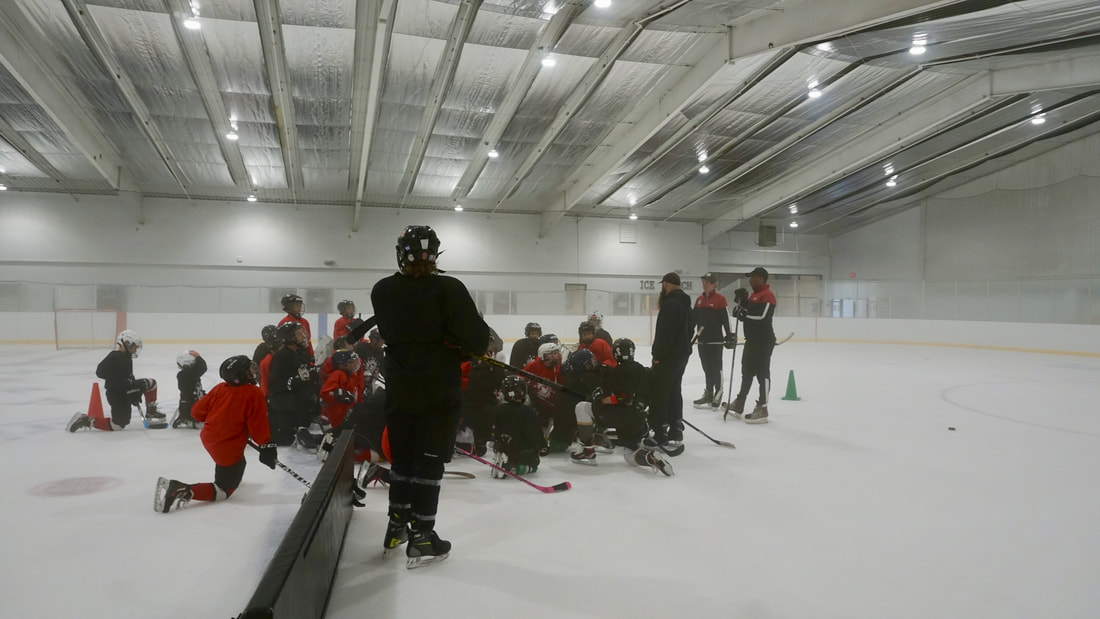
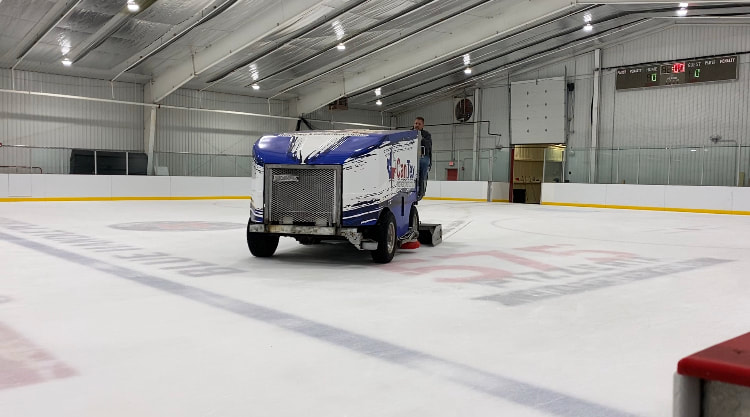

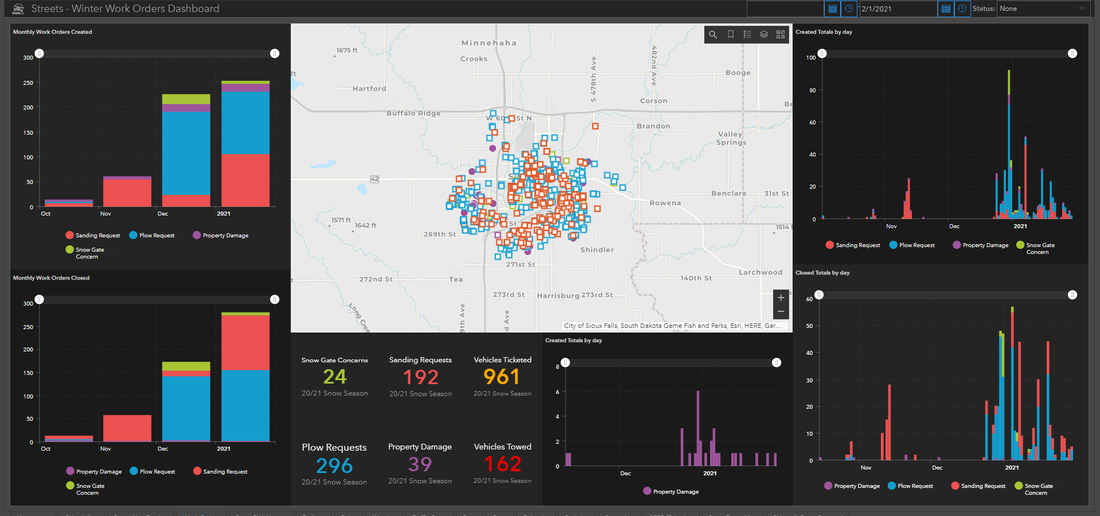
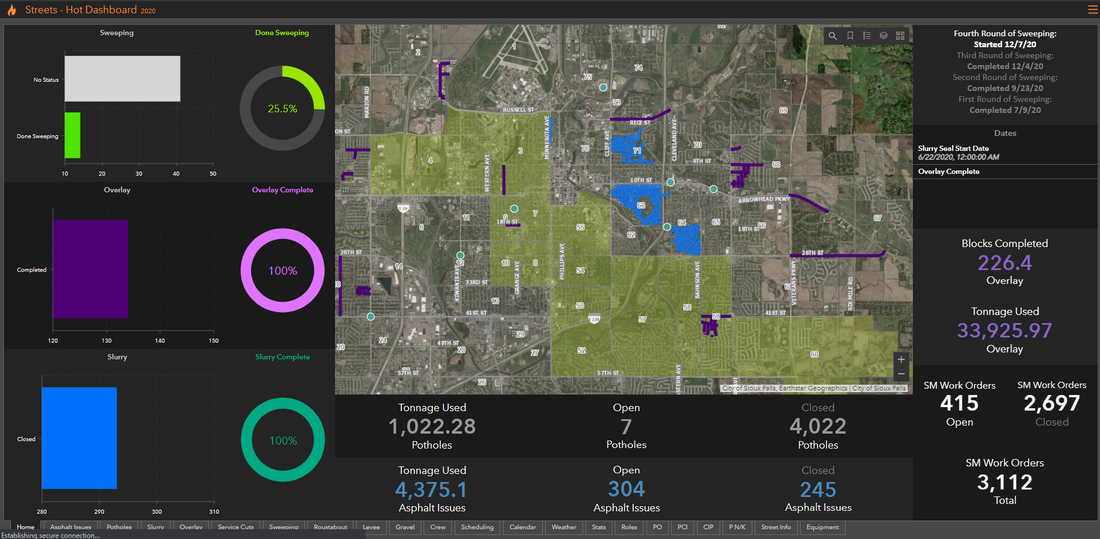
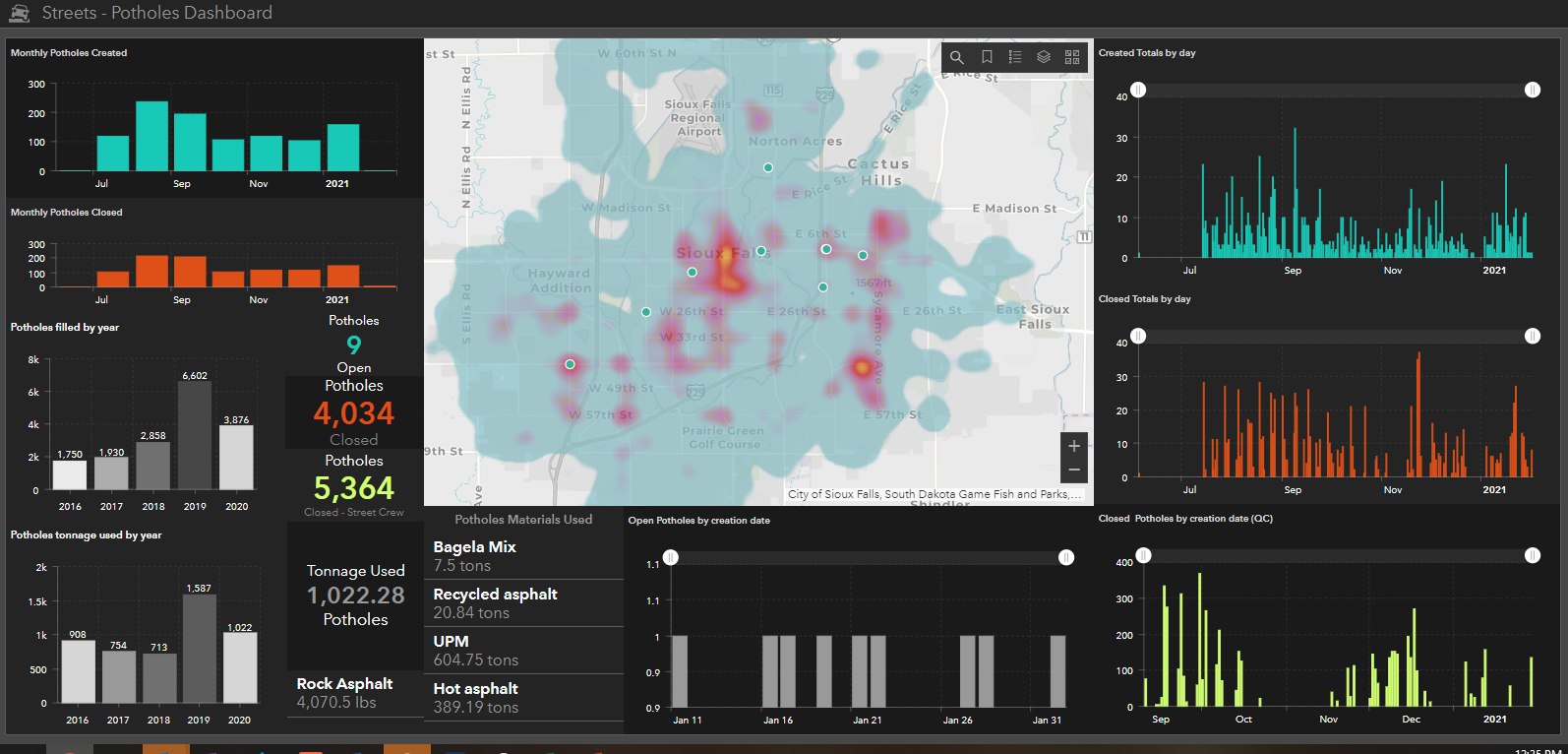
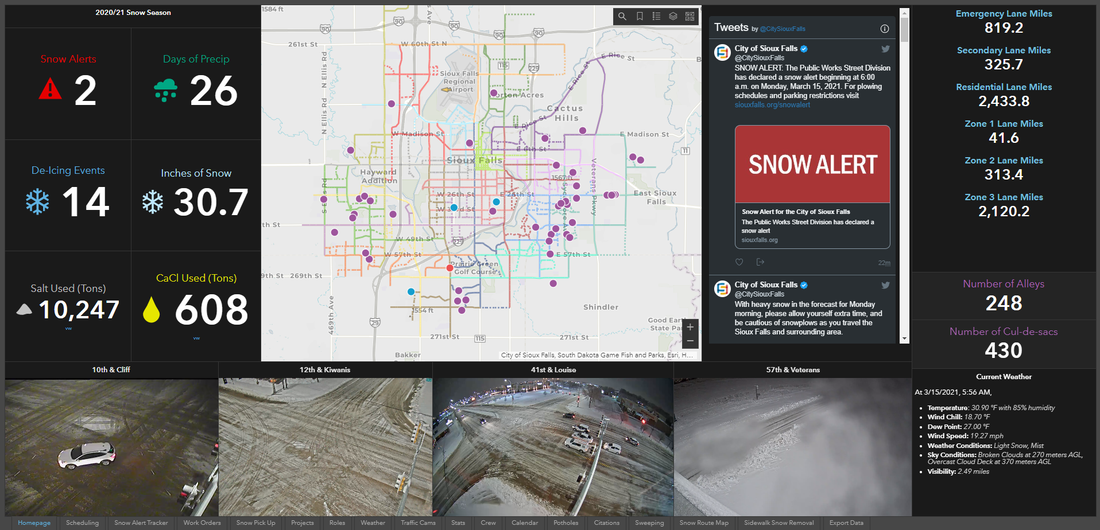

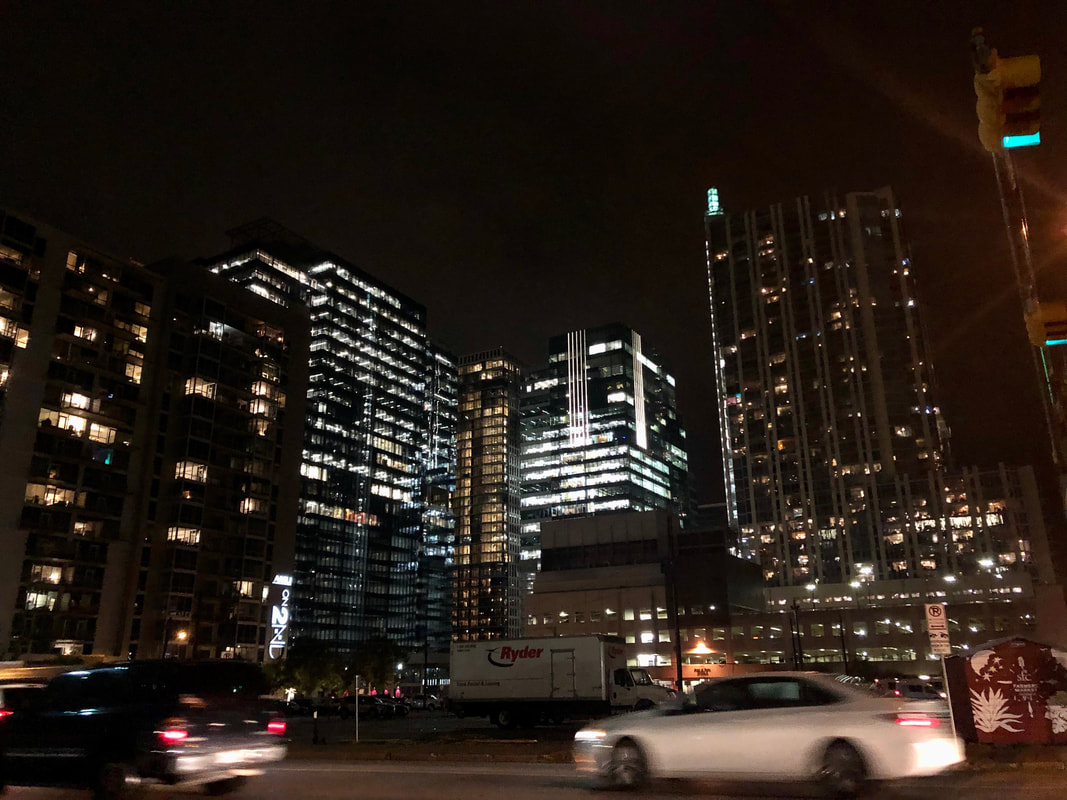
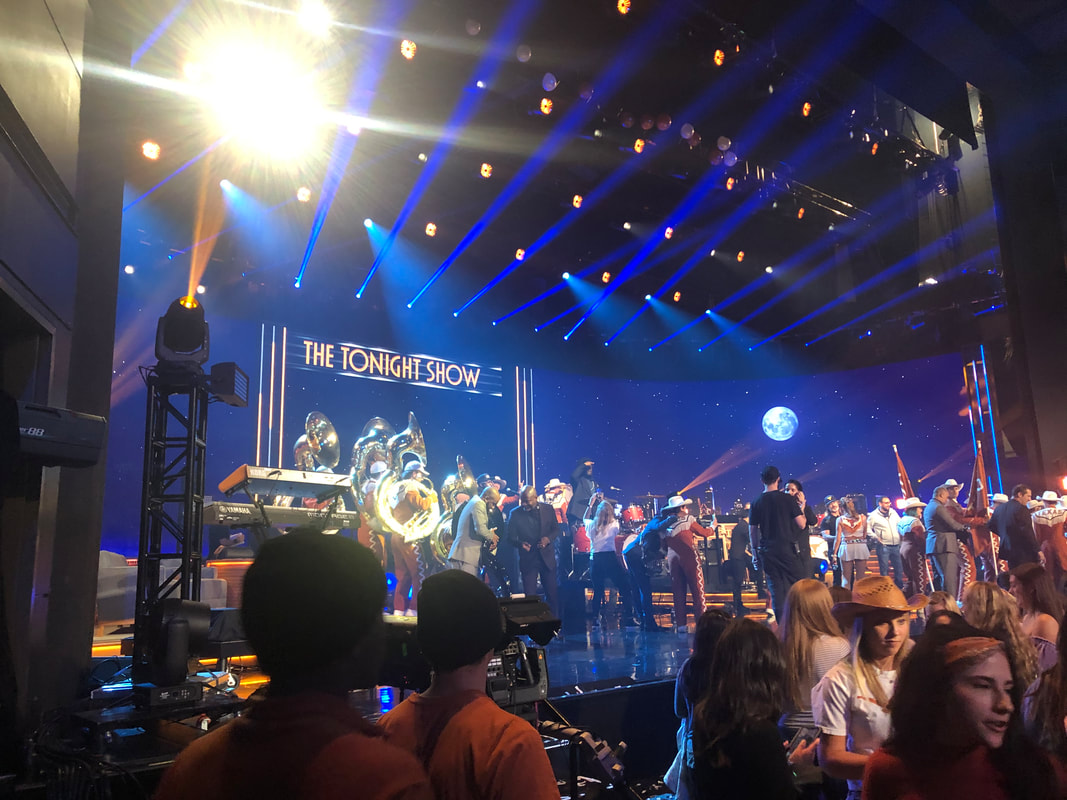
 RSS Feed
RSS Feed
